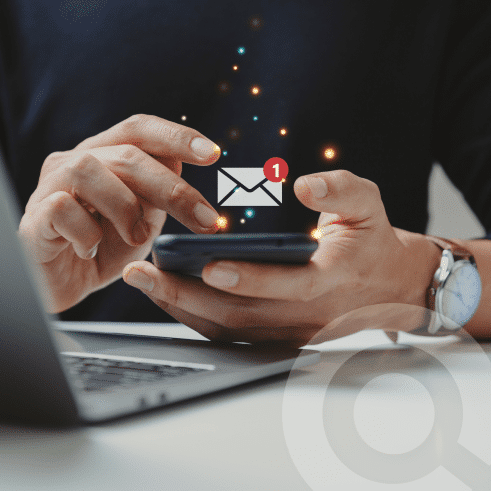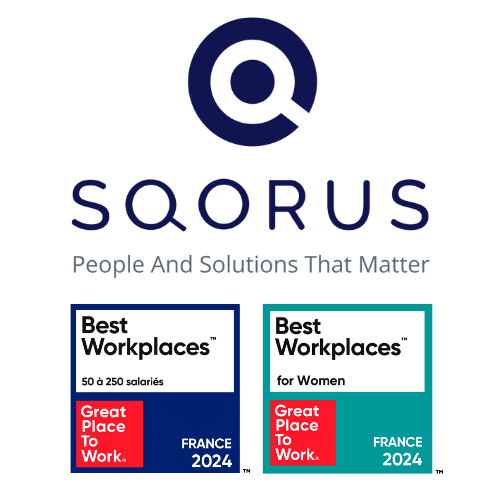DEI(Diversité Équité Inclusion) has been a strategic topic for some years now, and if the latest articles predicting HR challenges for 2025 are anything to go by, it will remain so for the long term.
Many companies have been communicating on this theme to attract talent. But while recruiting teams representing diversity is an important step, implementing an inclusion strategy is just as important.
To achieve this, companies have not hesitated to draw inspiration from society by setting up allyship systems.
What is an ally in diversity and inclusion?
Although fundamental in the fight against discrimination and inequality, the notion of ally is not yet familiar to everyone.
Its dictionary definition: “A person who gives another his support, takes his side” sums it up well, but is incomplete for understanding its importance in Inclusion & Diversity issues.
We can add, for example, that to be an ally of a cause or a population, you don’t have to belong to it.
Examples: men can be allies of women, white people can be allies of people suffering racial discrimination, heterosexuals can be allies of the LGBTQIA+ population etc.
An ally is not a victim of the discrimination he/she is actively working to combat.
This implies an awareness of inequalities and, more than simple compassion, a desire to change things.
The importance of allies: why is their role crucial?
Allies are extremely important in the quest for inclusivity, because they can speak out and act on behalf of those who are under-represented, marginalized, invisibilized, etc. They thus carry part of the burden of the work needed to deconstruct society.
Allies play a crucial role in the cultural transformation of companies, a process that can be reinforced by collective intelligence for sustainable transformation.
Corporate allyship system
Developing allyship in the workplace
While becoming an ally is first and foremost an individual and personal act belonging to the world of activism, the concept has been widely developed in corporate Diversity and Inclusion (D&I) departments.
The company’s role as an ally
To go further, according to Benjamin Pastorelli, a specialist in diversity issues in the workplace: ” The company itself can embody itself as an ally, by clearly condemning discriminatory acts, modifying its organization to make it more inclusive, training its employees in these themes, etc. “
Examples of successful practices
This new positioning of the company for DEI issues is a real turning point.
Setting up a system of allies complements benevolent management, which is one of the keys to positive mental health in the workplace.
In a previous article on diversity and inclusion, we talked about the ever-increasing demands of the younger generations on the job market in terms of ethics, fairness, CSR, etc., and how these demands are being met.
In this sense, companies can no longer afford to attract candidates with rhetoric without embodying the values put forward.
A Salesforce study reveals that only 40% of the professionals questioned claim that their company leads with the same values as those advocated. For the remainder, they even think that their company is not actively working to encourage diversity.
When you consider that for 80% of employees, the company has the power, but above all the responsibility, to have a strong positive societal impact, it’s clear that more needs to be done.
Research from Change Catalyst also shows that a corporate ally “can significantly increase engagement, overall happiness, productivity, sense of belonging, psychological safety and the likelihood of staying with the company, while reducing stress and creating opportunities for career development”.
Setting up a system of allies, and becoming one, can be a highly effective transformation lever for a company wishing to accelerate on the subject.
An article by the Randstad Group cites the example of Unilever (Amora, Ben&Jerry’s, Carte d’Or, Eléphant etc.), which has set up ERGs (Employee Resources Groups) for people with disabilities (Enable@Unilever) and LGBTQIA+ people (proUd).
These groups amplify the voices of under-represented or invisible profiles.
These initiatives can also be found at leading DEI companies such as Johnson & Johnson and L’Oréal.
Allyship challenges and opportunities
But becoming an ally doesn’t happen overnight or on a whim. Raising awareness and training employees in this role is very important before they are integrated into these ERGs.
A charter of best practices for being a good ally can be a simple and effective additional tool for fulfilling this role in the best possible conditions.
How to be a good ally
Acknowledge your privileges and show humility
This is perhaps the most important rule to follow when becoming an ally.
” Being an ally begins, first and foremost, with recognizing that you have certain privileges. You need to recognize that you’re still learning, and that you’ll never really know what equity-seeking groups have gone through or experienced. “Varsha Naik (Executive Director, Regional Diversity Roundtable)
So it’s important to let people have their say and to listen actively.
In the face of criticism or questioning, it’s counterproductive to lash out; in these cases too, you need to listen, apologize if necessary, and keep learning.
Being an ally means making room for others, acting for others and putting your ego aside.
“The most important thing is to make sure that you’re there as fundamental support and that your objective is not to manage the group.” – Varsha Naik.
The role of an ally is largely, after having informed him/herself, to sensitize (in the most constructive way possible) his/her entourage and the people he/she comes into contact with, by reacting to bad behavior or inappropriate comments.
Read and be proactive in your education
As anally, you’ll learn a lot by listening and taking an interest in others. But don’t put all the burden of this learning on those around you or those you meet. Be proactive and read as much as you can, listen to podcasts, do research on your own.
You’ll learn about difficulties encountered by others that you had no idea about, or about recent changes that impact them, such as digital technology is revolutionizing the workplace, especially for people with disabilities.
Educate others
People who suffer discrimination go through it every day, and it’s a long-term battle.
If there is no one concerned by the negative comments or actions at the time, an ally must step in and deliver the right message.
However, when a similar case arises in the presence of a concerned person, it’s important to know whether that person wants an intervention, is comfortable with it and so on. An ally intervenes for, but not instead of.
Conclusion on allies in diversity and inclusion
In conclusion, it’s important to remember thatbeing an ally is neither a title nor a status to be used as a means of social promotion. It’s not just a one-off intervention or a desire to do the right thing. It’s a daily commitment that requires real self-questioning, active listening, and courageous and humble action, whether as an individual or as a company.
In a professional and social world in search of equity,allyship is a powerful lever for inclusion, enabling everyone to find their place and flourish.
SQORUS, HR and change management experts, can help you set up awareness-raising campaigns, ally systems, community events, etc.
34 HR innovations and trends for 2025
Discover the latest HR innovations and trends and accelerate your digital transformation.
Contact
A project? A request?A question?
Contact us today and find out how we can work together to make your company’s digital future a reality.













